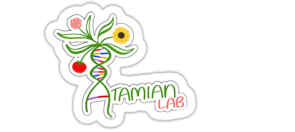Current Research Projects
Soil microorganisms play vital roles in plant growth, development, immunity, and adaptation to the large number of environmental conditions found in nature. Our lab demonstrated that the microbiome profile of the Arabidopsis endosphere (the microbes inhabiting the interior of the root) varies across the day/night cycle. This promising result raises many exciting questions that we want to answer through this project using metagenomic, metatranscriptomic, and physiological approaches:
- What is the role of the plant circadian clock on the composition of the root microbiome?
- What are the molecular mechanisms underlying this regulation?
- What are the molecular mechanisms by which certain microbes interact with plants?
- How did certain microbes evolve to establish this interaction with plants?
- What are the effects of these interactions on plant growth and development?
Ancient records as early as Mesopotamia (2600 B.C.) show humans using plant secondary metabolites (commonly known as medicinal plants) for the treatment of diseases and illnesses. With the current advancements in technology and chemical methodologies, the scientific community is actively identifying structurally and functionally diverse secondary plant metabolites. Some of the unique biological activities of these plant metabolites have aided in drug discovery. In addition, plant secondary metabolites are routinely used in food flavors, fragrances, and as insecticides and dyes. We use high-throughput transcriptome and metabolome analysis to explore and identify biosynthetic pathways.
We currently have ongoing projects with:
Hyptis species
Fabiana species
Escallonia species
Thymus species
Climate change scenarios for much of the southwestern U.S. include drier and more variable rainfall patterns compared to the last century, with unknown consequences for plant communities. Land managers and restoration practitioners, who are charged with restoring vast areas of natural landscapes that have been damaged or destroyed by human activity and by climate change, must re-assemble vegetation communities that are appropriate for future drier conditions. Genomic tools can elucidate the molecular mechanisms underlying plant responses to changing environmental conditions. We use a combination of transcriptomic, metabolomic, and physiological analyses to understand the mechanisms by which diverse plant communities experience high intra- and inter-annual variation in rainfall and how individual species and whole ecosystems adapt to the challenges of climate change.
In a separate, more recent project, we are interested in harnessing the latest advancements in machine learning to improve our capacity to predict crop yields by integrating genomic and environmental data. By utilizing sophisticated algorithms and models, we aim to analyze vast datasets that include genetic information of crops and various environmental factors. Ultimately, our goal is to provide more accurate and timely forecasts, which can help farmers make informed decisions about planting, irrigation, and harvesting, thereby optimizing productivity and sustainability in agriculture.
Soil microorganisms play vital roles in plant growth, development, immunity, and adaptation to the large number of environmental conditions found in nature. Our lab demonstrated that the microbiome profile of the Arabidopsis endosphere (the microbes inhabiting the interior of the root) varies across the day/night cycle. This promising result raises many exciting questions that we want to answer through this project using metagenomic, metatranscriptomic, and physiological approaches:
- What is the role of the plant circadian clock on the composition of the root microbiome?
- What are the molecular mechanisms underlying this regulation?
- What are the molecular mechanisms by which certain microbes interact with plants?
- How did certain microbes evolve to establish this interaction with plants?
- What are the effects of these interactions on plant growth and development?
Ancient records as early as Mesopotamia (2600 B.C.) show humans using plant secondary metabolites (commonly known as medicinal plants) for the treatment of diseases and illnesses. With the current advancements in technology and chemical methodologies, the scientific community is actively identifying structurally and functionally diverse secondary plant metabolites. Some of the unique biological activities of these plant metabolites have aided in drug discovery. In addition, plant secondary metabolites are routinely used in food flavors, fragrances, and as insecticides and dyes. We use high-throughput transcriptome and metabolome analysis to explore and identify biosynthetic pathways.
We currently have ongoing projects with:
Hyptis species
Fabiana species
Escallonia species
Thymus species
Climate change scenarios for much of the southwestern U.S. include drier and more variable rainfall patterns compared to the last century, with unknown consequences for plant communities. Land managers and restoration practitioners, who are charged with restoring vast areas of natural landscapes that have been damaged or destroyed by human activity and by climate change, must re-assemble vegetation communities that are appropriate for future drier conditions. Genomic tools can elucidate the molecular mechanisms underlying plant responses to changing environmental conditions. We use a combination of transcriptomic, metabolomic, and physiological analyses to understand the mechanisms by which diverse plant communities experience high intra- and inter-annual variation in rainfall and how individual species and whole ecosystems adapt to the challenges of climate change.
In a separate, more recent project, we are interested in harnessing the latest advancements in machine learning to improve our capacity to predict crop yields by integrating genomic and environmental data. By utilizing sophisticated algorithms and models, we aim to analyze vast datasets that include genetic information of crops and various environmental factors. Ultimately, our goal is to provide more accurate and timely forecasts, which can help farmers make informed decisions about planting, irrigation, and harvesting, thereby optimizing productivity and sustainability in agriculture.
